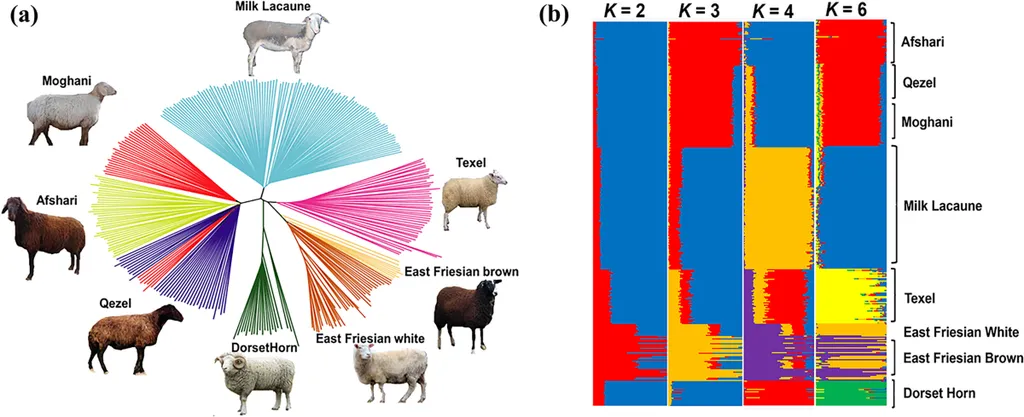In the rolling hills where sheep grazing is a timeless tradition, a groundbreaking study is reshaping the future of livestock breeding. Researchers, led by Reza Talebi from the Agricultural Biotechnology Research Institute of Iran, have delved into the genomic architecture of Moghani sheep and their crossbred counterparts with Booroola and Texel sheep. The findings, published in the journal *Scientific Reports* (translated from Persian as “Scientific Reports”), offer a glimpse into the delicate balance between productivity and adaptability in sheep breeding.
The study, which utilized genotyping-by-sequencing (GBS) to assess genetic diversity, admixture patterns, and selection signatures, reveals a complex interplay of genetic factors that influence the productivity and survivorship of crossbred lambs. “We found that purebred Moghani sheep exhibit the highest genetic diversity and the lowest inbreeding, serving as a key genetic bridge among the groups,” Talebi explains. This genetic diversity is crucial for the adaptability and survivorship of the sheep, factors that are often overlooked in the pursuit of productivity.
The research highlights the trade-offs that impact productivity and adaptability. For instance, while crossbreeding with Booroola or Texel sheep can enhance productivity, it may also limit adaptation and survivorship in crossbred lambs. The study found that Booroola Romney × Moghani (BRM) and Texel Tamlet × Moghani (TTM) crossbreds showed lower heterozygosity and increased inbreeding, suggesting recent inbreeding and reduced effective population sizes. “This indicates a need for improved breeding methods that prioritize these trade-offs,” Talebi notes.
The functional annotation of runs of homozygosity (ROH) islands connected different crossbred groups to specific biological pathways. For example, Texel Dalzell × Moghani (TDM) and TTM were linked to immune response and muscle development pathways, while Booroola Merino × Moghani (BMM) and BRM were associated with metabolic and reproductive pathways. These findings underscore the importance of understanding the genomic architecture of sheep to optimize breeding strategies.
The study’s implications extend beyond the farm. In the energy sector, where livestock plays a significant role in sustainable agriculture and bioenergy production, understanding genetic diversity and inbreeding can lead to more resilient and productive livestock populations. This, in turn, can contribute to the development of sustainable bioenergy sources and improve the overall efficiency of agricultural systems.
However, the researchers caution that the results should be interpreted with care due to the limited genotype representation in the study. “Next research should cover a larger panel of genotypes to have a more complete knowledge,” Talebi advises. This call for further research opens up new avenues for exploration and innovation in the field of livestock genomics.
As we stand on the precipice of a new era in agriculture, this study serves as a reminder of the intricate balance between productivity and adaptability. It challenges us to rethink our breeding strategies and prioritize genetic diversity and resilience. In doing so, we can pave the way for a more sustainable and productive future in livestock farming and beyond.

